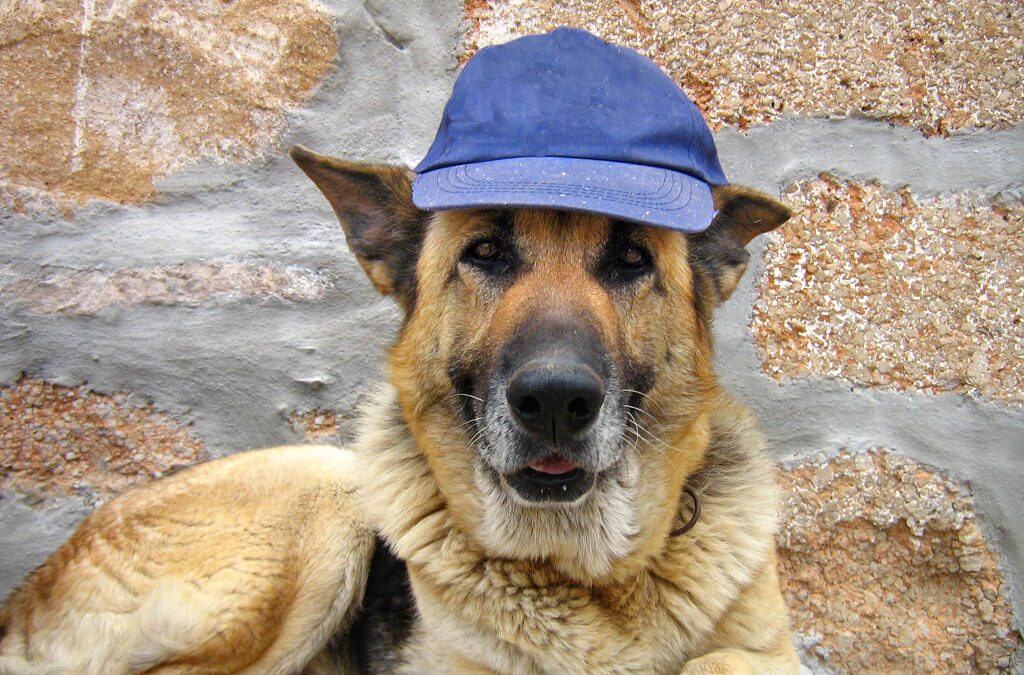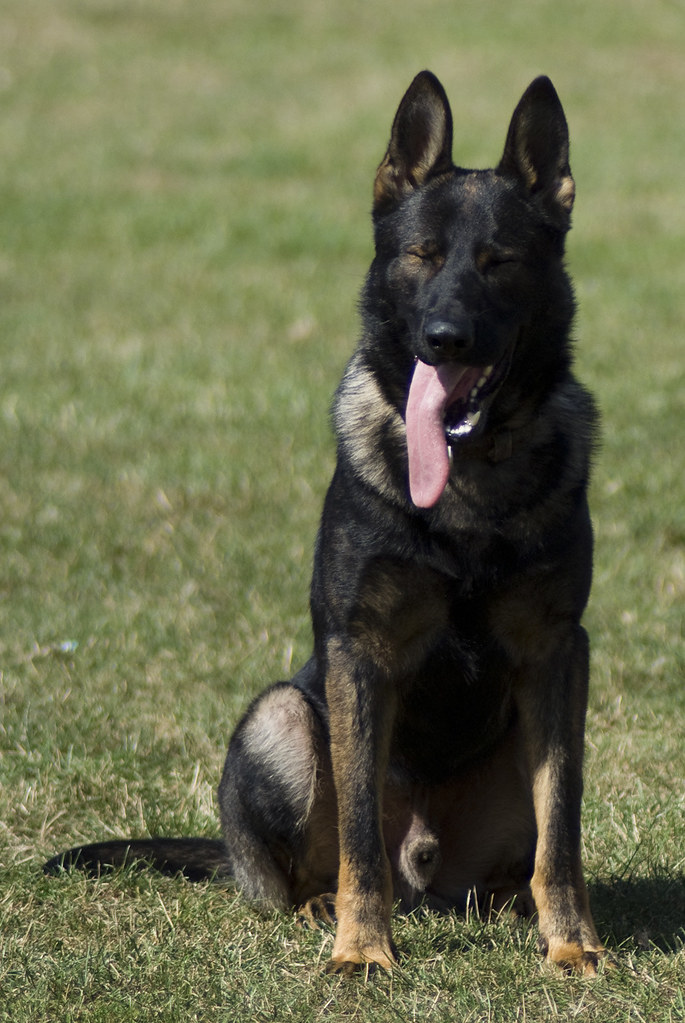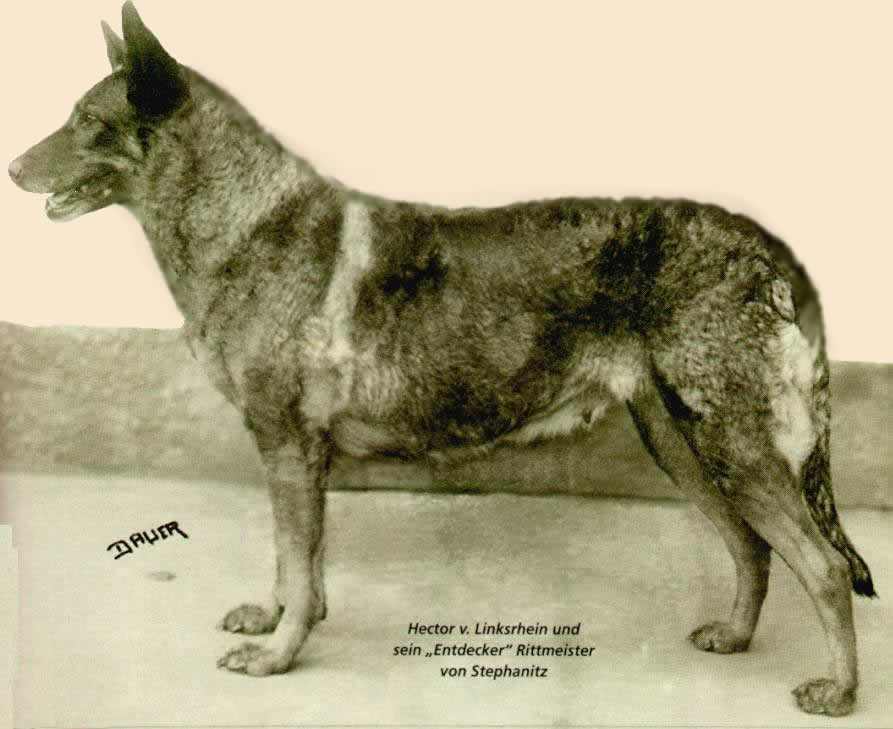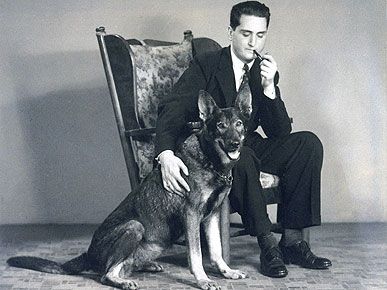Name: German Shepherd
Breed Age: Recognized by the AKC in 1908
Average Size: 24-26” for males, 22-24” for females
Average Weight: 65-90lbs for males, 50-70lbs for females
Life Expectancy: 7-10 years
Coat Variations: Black, Black & Cream, Black & Red, Black & Silver, Black & Tan, Blue, Gray, Liver, Sable, White, Bi-Color
*All breed information comes from the AKC website on German Shepherds
Fun Fact: Did you know that there is an entire sport dedicated to showing off the capabilities of the German Shepherd? Called “Schutzhund”, it was designed to test a German Shepherd’s incredible abilities. The dogs are evaluated based on the following categories: Intelligence, desire to work, bond with their handler, courage, protective instincts, trainability, sense of smell, and perseverance.
German Shepherd Breed History
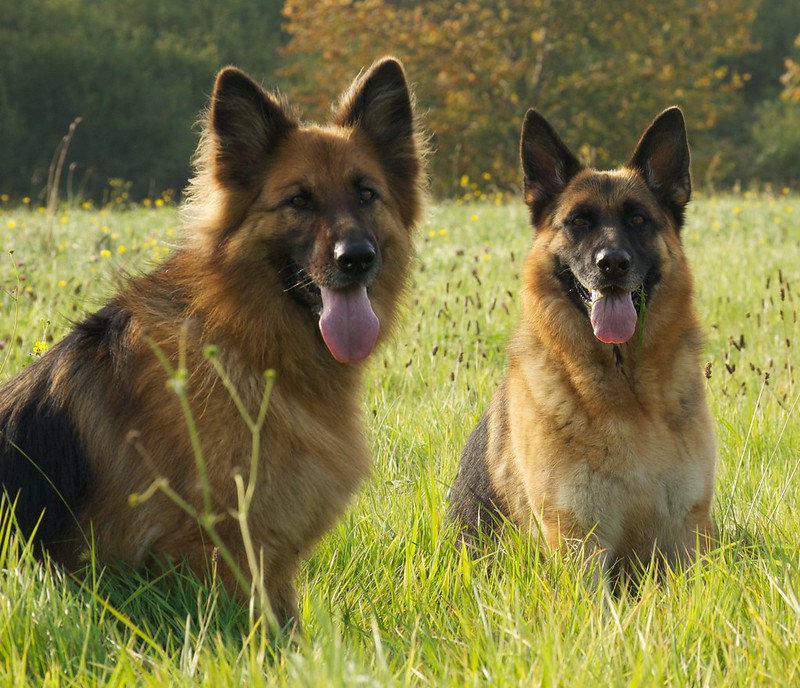
German Shepherds originated in Denmark in the 1800’s….and their primary function was definitely not herding livestock…
…Ok, you got me. Yes, they’re inarguably German and yes, they absolutely were bred to herd and protect sheep. I suppose it’s sort of in their name or something.
This breed owes its history to a man named Max Emil Friedrich von Stephanitz. Von Stephanitz was a cavalry officer for the German military who grew to love the herding dogs he encountered on his travels for his work. Eventually, Von Stephanitz bought a large estate in Germany so that he could live out his dream of creating a standardized German sheepdog.
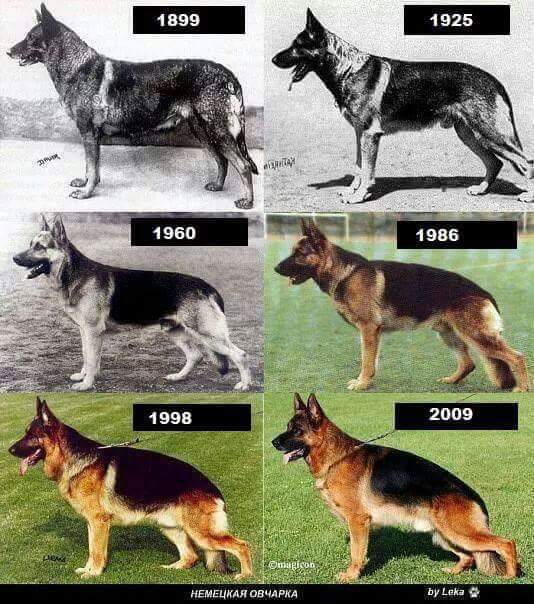
The evolution of the modern German Shepherd
Horand von Grafrath circa 1899. He was purchased by von Stephanitz to be used as the genetic basis for German Shepherds
It was difficult to identify the breed of most of the herding animals in Germany at that time, as dogs were bred for ability, not aesthetics. Regional breeds did emerge, but von Stephanitz wanted to combine and selectively breed them to create both an attractive and useful dog. By crossing a breed that came from Thuringia, Germany with another breed from Wurttemberg, Germany, he was hoping to get the best of both worlds. The dogs from Thuringia were stocky with wiry hair, whereas the Wurttemberg dogs were larger and heavier. Both boasted great temperaments and high intelligence. The resulting dogs were what we now know today as German Shepherds.
German Shepherd Strengths
- Loyal to their families
- Courageous
- Confident
- Incredible Intelligence
- Dedicated working dogs
- Attentive companions
- Fierce guard dogs

German Shepherd Weaknesses
- Needs more than basic obedience training
- They are working dogs and can be destructive/misbehaved without a “job”
- Their double coat can be a source of a lot of shedding about twice a year
- Requires more than the average amount of exercise and mental stimulation
- Can be wary of strangers, so socialization at an early age is helpful
6 Common German Shepherd Health Concerns:
Hip Dysplasia
- Hip dysplasia is a common skeletal deformation, usually started by a dog’s genetics and exacerbated by weight, exercise, and nutrition. Hip dysplasia occurs when a dog’s hip joint, normally a ball and socket mechanism, does not develop properly. This causes the grinding of the bones in the joint, and can lead to total loss of function of the dog’s leg. Foods that help temper excessive growth can be helpful for puppies of breeds most at risk for hip dysplasia. Maintaining a healthy weight throughout the dog’s life is also crucial, as extra weight only adds more pressure to the at-risk joints. A veterinarian can also recommend joint supplements as part of a preventative treatment plan.
Diabetes
- Diabetes is a metabolism disorder that affects how the body breaks down and utilizes glucose and insulin. It can present as insulin-deficiency, or insulin-resistant. Insulin-deficient means that the dog is not producing enough of its own insulin. Insulin-resistant means that the dog can produce some insulin, but the insulin is not being properly utilized by the body. There is no cure for diabetes, but a dog’s condition can be easily monitored and managed by a veterinarian.
Hemophilia
- Hemophilia is an inherited disease that is characterized by an inability for the animal’s blood to clot. This can result in minor injuries becoming life threatening, as it is very hard for the animal’s body to stop the bleeding on its own. The severity of the disease is variable, but if left untreated could lead to irreversible trauma for the animal. The good news is that affected animals can lead a reasonably normal life with a typical lifespan. Close monitoring by a veterinarian is critical.
Bloat
- The official term for this health issue is GDV complex, or gastric dilation-volvulus complex. This disease causes the dog’s stomach to fill with air. This rise in pressure cuts off the blood supply returning to the heart, and this reduction in blood volume will send the dog into shock within hours. Watch your pup for a sudden enlargement of their abdomen, coupled with retching, restlessness, excessive salivating, and a tender belly. If you suspect your dog may be at risk for this health condition, please bring them in immediately for a medical evaluation!
Pancreatitis
- The pancreas plays an important role in food digestion by producing hormones like insulin and digestive enzymes to help break down food. When the pancreas becomes inflamed, this is called pancreatitis. It can happen to a dog at any age, and all breeds can be affected. Pancreatitis causes the enzymes produced by the pancreas to be activated before they get to the small intestine, resulting in the breakdown of the pancreas itself. According to VCA Animal Hospitals, “The most common clinical signs include nausea, vomiting, fever, lethargy, abdominal pain, diarrhea, and decreased appetite.” They also describe the behavior to watch for if you think your pet may be experiencing discomfort due to pancreatitis, “During an attack, dogs may take a ‘praying position’, with their rear end up in the air while their front legs and head are lowered onto the floor.” Please bring your pet in immediately if they display any of the above symptoms.
Epilepsy
- According to Purina Pro Club, “about 66% of dogs with idiopathic epilepsy (epilepsy that has no clear origin) experience their first seizures from 1 to 3 years of age.” Not all seizures are the same and can occur in dogs for many reasons, so it is important for a veterinarian to run diagnostic tests to determine the cause of a dog’s seizures in order to determine the proper treatment plan.
If you have any questions or concerns about your pup’s health, please contact us as soon as possible to address them!
Famous German Shepherd: Buddy the first Seeing Eye Dog in America
Morris Frank was fully blind by the age of 17. At this time, seeing-eye dogs were only newly being trained to help WWI veterans who had gone blind during combat. Frank, like many other differently-abled individuals, had to rely on family and friends to help meet their daily needs. Frank hired a young boy to help him carry out small daily tasks, but as you can imagine, the child was not the most attentive or dedicated to the work, and would sometimes leave Frank alone.
In 1928, Frank heard about a woman named Dorothy Eustis in Switzerland who was training seeing-eye dogs. He traveled to meet her after pitching the idea of her training a dog for him. He met and worked with Buddy, and the training proved to be incredibly successful. Buddy was officially the first seeing-eye dog trained to assist a civilian! After this success, Frank and Eustis opened a training school for seeing-eye dogs in America in 1929 and vowed to raise awareness for public accessibility all over the country.
Read more about Buddy’s story here.

